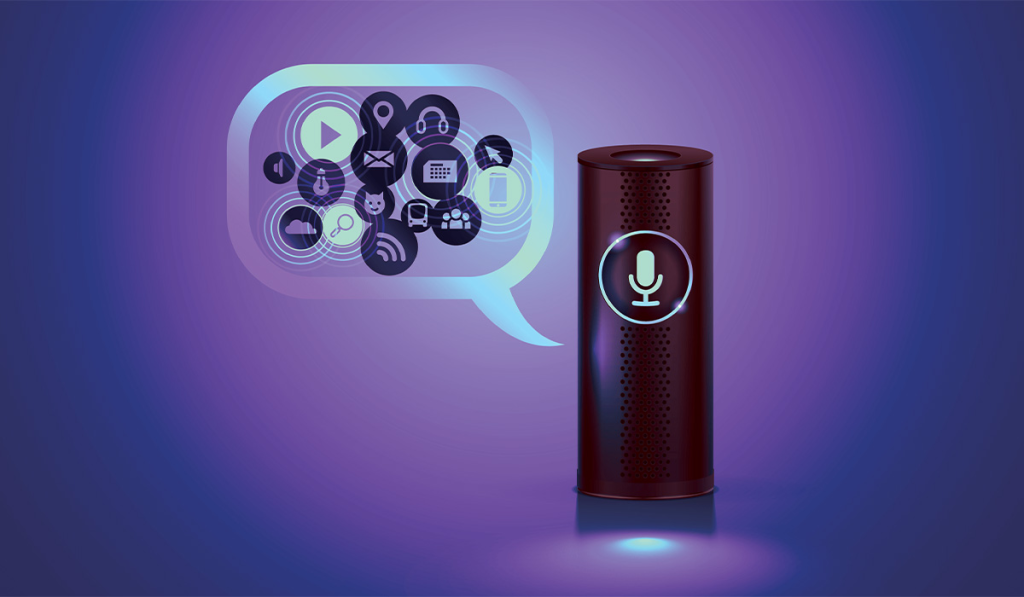Imagine having a personal assistant available 24/7 to help with tasks, answer questions, and keep your life organized. That’s the magic of voice assistants, and they’re quickly becoming an essential part of modern living. Whether it’s Alexa, Siri, or Google Assistant, these tools are transforming how we interact with technology.
Voice Assistants Explained isn’t just about convenience—it’s about unlocking smarter ways to manage your day. From setting reminders to controlling smart devices, they offer features that save time and simplify routines.
In this article, we’ll explore six powerful features of voice assistants that are revolutionizing daily life. These innovations are changing the way we live, work, and connect.
Curious to see how they can transform your day? Let’s uncover the possibilities together!
Key Takeaways
- Voice assistants streamline daily routines, offering hands-free convenience for tasks like setting reminders, answering questions, and controlling smart devices effortlessly.
- Smart home integration transforms living spaces, enabling users to manage devices like lights and thermostats with simple voice commands for added convenience.
- Personalization enhances user experiences, as voice assistants learn preferences, habits, and routines to provide tailored recommendations and efficient interactions.
- Accessibility features promote inclusivity, allowing individuals with physical or visual impairments to navigate technology using voice commands for seamless engagement.
- Privacy and security concerns remain challenges, with voice assistants requiring sensitive data and facing potential risks like data breaches and unauthorized access.
Table of Contents
What Are Voice Assistants?

Voice assistants are AI-powered software programs designed to interact with users through spoken commands. They perform a range of tasks, such as setting reminders, answering queries, or controlling smart devices.
These tools rely on natural language processing (NLP) to interpret and respond to human speech accurately. NLP acts as a translator, breaking down spoken words into actionable data that the assistant can process.
6 Key Features of Voice Assistants
Voice assistants are reshaping the way we interact with technology. Let’s explore their most essential features that enhance everyday life:
1. Voice Recognition and Commands
Voice assistants can recognize and process spoken commands with remarkable accuracy. They adapt to different accents, tones, and even individual user voices to deliver personalized experiences.
2. Smart Home Integration
Voice assistants seamlessly connect with smart devices like lights, thermostats, and security systems. Users can control their homes with simple voice commands, making daily tasks more convenient.
3. Scheduling and Reminders
Voice assistants help users stay organized by setting reminders, alarms, and calendar events. With voice input, scheduling becomes faster and hands-free.
4. Information Retrieval
Voice assistants provide quick answers to questions, from weather updates to traffic reports. They access vast online databases to deliver reliable and timely information.
5. Entertainment and Shopping
Users can play music, stream videos, or shop online with voice commands. These features simplify leisure activities and enhance shopping convenience.
6. Accessibility Features
Voice assistants improve accessibility for users with physical or visual impairments. They create an inclusive experience by offering hands-free navigation and voice-guided functionality.
5 Benefits of Using Voice Assistants
Voice assistants have become an integral part of modern technology. They simplify daily routines and make interactions with devices more efficient.
Here are the 5 benefits of using voice assistants:
| Benefit | Description |
|---|---|
| Convenience | Enables hands-free task management, useful for multitasking and productivity. |
| Time-Saving | Processes commands instantly, saving time on routine tasks and information retrieval. |
| Personalization | Learns user behavior to provide tailored recommendations and experiences. |
| Improved Accessibility | Offers features for individuals with physical or visual impairments, ensuring inclusivity. |
| Smart Ecosystem Management | Acts as a hub for smart devices, enabling seamless control of connected systems. |
1. Convenience
Voice assistants allow users to perform tasks hands-free, offering unparalleled convenience. Whether it’s sending a quick text, setting alarms, or making calls, they reduce the need for manual input. This feature is particularly useful for multitasking, allowing users to stay productive while handling other activities.
2. Time-Saving
By quickly processing voice commands, these assistants save valuable time. Instead of navigating menus or typing queries, users can retrieve information or control devices in seconds. This efficiency is especially beneficial for busy individuals juggling work, family, and other commitments.
3. Personalization
Voice assistants adapt to individual preferences and habits, creating a personalized experience. They learn user behavior over time, such as favorite playlists, frequently asked questions, or daily schedules. This customization makes interactions more intuitive and helps users feel understood by their technology.
4. Improved Accessibility
These tools make technology accessible to users with physical or visual impairments. Voice navigation allows individuals to interact with devices without needing a touchscreen or keyboard. This inclusivity ensures that everyone can benefit from advanced technological features, regardless of their physical abilities.
5. Smart Ecosystem Management
Voice assistants serve as central hubs for managing smart home devices. They integrate seamlessly with systems like lights, thermostats, security cameras, and even kitchen appliances. With simple voice commands, users can create a more connected and efficient home environment.
5 Challenges and Limitations of Voice Assistants
Voice assistants offer incredible convenience, but they are not without their challenges. Understanding these limitations helps users make informed decisions when adopting this technology.
1. Privacy Concerns
Voice assistants often require access to personal data to function effectively, raising privacy concerns. Many users worry about devices listening or collecting sensitive information without explicit consent.
2. Accuracy Issues
These assistants can struggle to understand certain accents, dialects, or noisy environments. Misinterpretations of commands can lead to frustration and reduced trust in the technology.
3. Dependence on Internet Connectivity
Voice assistants rely heavily on stable internet connections to process queries and deliver responses. In areas with poor connectivity, their functionality becomes significantly limited.
4. Security Vulnerabilities
The integration of voice assistants into smart ecosystems can introduce security risks. Hackers may exploit vulnerabilities to access personal data or control connected devices.
5. Cultural and Language Barriers
Voice assistants often perform better with widely spoken languages and struggle with less common ones. This limitation can exclude users who speak minority languages or rely on regional dialects.
5 Popular Voice Assistants Today
Voice assistants have revolutionized how we interact with technology. They simplify daily tasks and bring convenience to our fingertips.
Here are five leading voice assistants making waves today:
| Voice Assistant | Key Features | Integration |
|---|---|---|
| Amazon Alexa | Versatile, thousands of skills, controls smart devices, answers questions | Echo devices, third-party apps |
| Apple Siri | Intuitive design, natural language processing, Apple ecosystem integration | Apple devices, HomeKit |
| Google Assistant | Powerful AI, contextual understanding, multilingual support | Android devices, Google Nest products |
| Microsoft Cortana | Productivity-focused, integrates with Microsoft 365 tools | Windows devices |
| Samsung Bixby | Enhances Samsung devices, image recognition, device customization | Samsung smartphones, appliances |
1. Amazon Alexa
Amazon Alexa is a versatile voice assistant known for its compatibility with smart home devices. It can control lights, play music, answer questions, and even place orders on Amazon.
Alexa offers thousands of skills, allowing users to customize its functionality. Its Echo devices provide seamless integration with a wide range of third-party apps and gadgets.
2. Apple Siri
Apple Siri is renowned for its intuitive design and seamless integration with Apple devices. It helps users set reminders, send texts, make calls, and even navigate through maps.
Siri’s advanced natural language processing ensures accurate responses. It also works flawlessly with Apple’s ecosystem, including HomeKit and other proprietary apps.
3. Google Assistant
Google Assistant stands out for its powerful AI and contextual understanding. It can handle everything from answering questions to managing smart home devices.
Integrated into Android devices and Google Nest products, it provides a personalized experience. Its multilingual capabilities make it accessible to a diverse global audience.
4. Microsoft Cortana
Microsoft Cortana focuses on productivity and integration with Microsoft 365 tools. It helps users schedule meetings, manage tasks, and stay organized.
While Cortana has scaled back its consumer features, it remains a reliable assistant for business-oriented users. Its compatibility with Windows devices ensures smooth operation.
5. Samsung Bixby
Samsung Bixby is designed to enhance the functionality of Samsung devices. It enables users to control their smartphones, appliances, and other devices with voice commands.
Bixby’s unique features include image recognition and device customization. It’s especially effective within the Samsung ecosystem, offering seamless device integration.
Conclusion
Voice assistants have truly revolutionized how we manage daily tasks, offering unparalleled convenience and efficiency. From setting reminders to controlling smart homes, their powerful features are reshaping the way we interact with technology.
By streamlining routines and personalizing experiences, voice assistants save time and improve accessibility for users of all abilities. Their role as hubs for smart ecosystems makes them indispensable tools in modern life, despite challenges like privacy concerns and language barriers.
To unlock their full potential, explore how these tools can integrate seamlessly into your lifestyle. Adopt a voice assistant that aligns with your needs, and experience its transformative benefits firsthand.
Which feature has been most impactful for you? Let’s continue the conversation!
Discover the Next Generation of Convenience
Head to our blogs to uncover the game-changing ways voice assistants are improving modern life. Find practical insights to seamlessly integrate these tools into your daily routine.
Begin exploring the endless possibilities now.
FAQ
How Do Voice Assistants Improve Home Automation?
They allow hands-free control of smart devices, like lights, thermostats, and appliances, simplifying daily tasks.
What Are the Privacy Concerns With Voice Assistants?
Concerns include data collection, unauthorized access, and potential eavesdropping by the devices.
How Can Voice Assistants Enhance Productivity at Work?
They assist with scheduling, reminders, dictation, and quick access to information, streamlining workflow.
Can Voice Assistants Integrate With Other Smart Devices?
Yes, they integrate seamlessly with compatible smart devices for a connected and efficient system.



